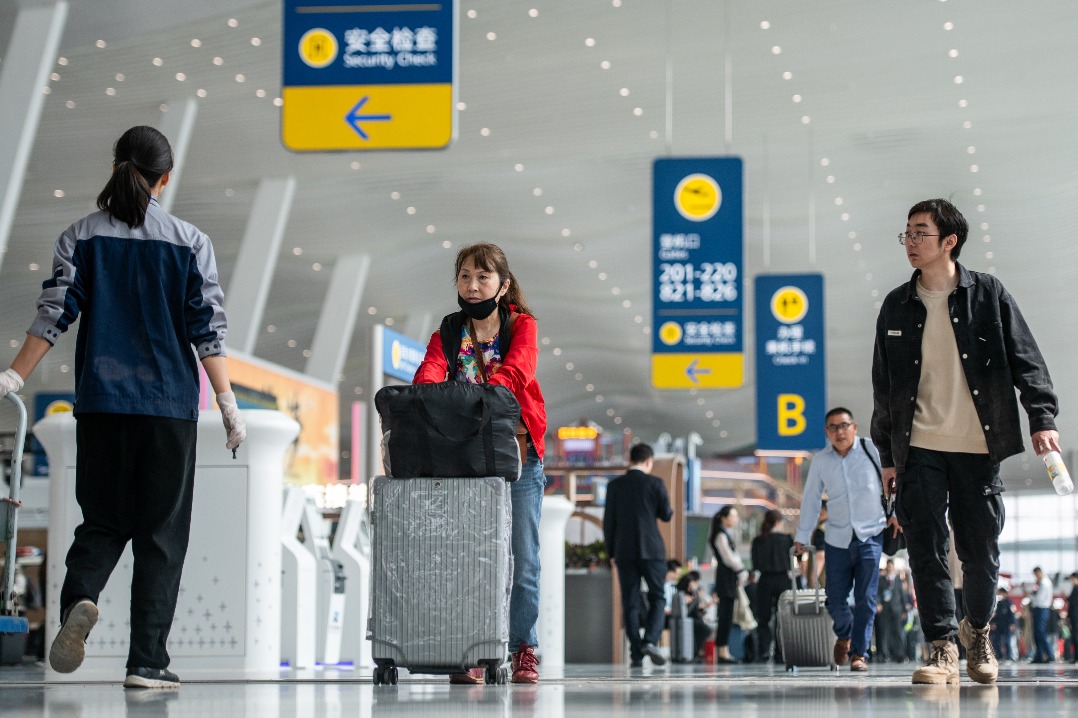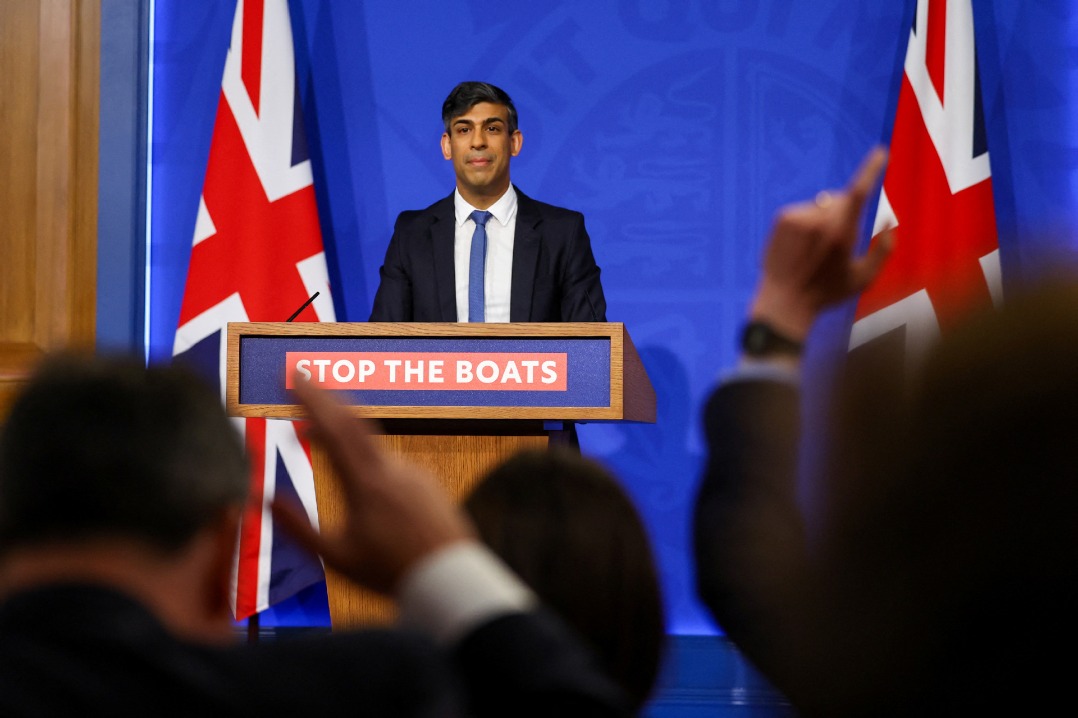Breaking the bottleneck for trade
By SUN JINGYING | chinawatch.cn | Updated: 2020-01-02 11:06
According to a report by the World Trade Organization published in 2018, transportation costs account for the biggest share of total transaction costs for trade in goods, a whopping 37 percent. Nevertheless, international trade agreements and economic-trade cooperation agreements have traditionally focused on bringing down trade costs such as tariffs and non-tariff trade barriers, paying little attention to transportation costs.
The Belt and Road Initiative, inspired by the ancient Chinese tradition of the Silk Road, marks a new-type international cooperation that focuses on transport infrastructure.
Most developing countries have long suffered from infrastructure deficits, less-than-ideal conditions for growth, which improve only at a glacial pace, and prohibitive trade costs. The situation is especially dire in landlocked countries and regions, whose infrastructure deficiencies handicap their access to and participation in international markets. On average, landlocked countries face 50 percent higher transportation costs than coastal countries and, in turn, have trade volumes 60 percent lower than the coastal economies.
According to a report by the Inter-American Development Bank, for Latin American countries, a 10 percent reduction in transportation costs is five times more effective at boosting trade than a 10 percent reduction in tariffs.
Yet their enormous deficit in infrastructure construction and investment means developing countries find it extremely hard to break the bottleneck of high transportation costs. Intergovernmental cooperation, especially in enabling interconnectivity, is often the key to propelling these economies out of poverty and underdevelopment. According to a report by the World Bank released in 2019, the Belt and Road transport corridors can potentially boost trade, drastically increase inbound foreign investment and enhance the quality of life for people in participating countries. The many developing countries along the Belt and Road routes have long been plagued by inadequate infrastructure services and public policy gaps. As a result, these economies are underperforming their trade potential by 30 percent, and receive little more than 30 percent of the foreign direct investment they could have attracted had their infrastructure been up to par.
Specifically, the Belt and Road Initiative can significantly reduce transportation time and in turn, shipping costs. Launched in January 2008, the Beijing-Hamburg Container Express covers a distance of over 10,000 kilometers in only 15 days, which would take double that amount of time by sea. The China-Europe Railway, the Sino-Thai Railway and the China-Laos Railway projects are all key parts of the Belt and Road Initiative. Together, they make up the pan-Asian rail network, which, when completed, will considerably shorten the shipping routes in landlocked Asian countries, and in turn bring down trade costs. Aside from enabling a more agile infrastructure network for landlocked economies, China has also been making great strides in driving connectivity in maritime transportation. According to OECD statistics, in the five years since the Belt and Road Initiative came into force, Chinese companies have participated in the construction and operation of 42 new ports in 34 countries, one-fifth of which are found in Africa.
And as new infrastructure enhances trade and stimulates growth in Belt and Road countries, other countries and regions also stand to benefit. A dozen developing countries in Africa, Latin America and economies on the Atlantic and Pacific Coasts already have the necessary conditions for building deep sea ports, which can give rise to new international trade routes and potentially reshape major trade flows in the global value chain. Countries along the Belt and Road Economic Corridors can expect to see their trade grow between 2.8 and 9.7 percent, while world trade may see additional growth of between 1.7 and 6.2 percent.
Meanwhile, connectivity can boost inbound foreign investment to low-income economies, with most of the countries along the Belt and Road Economic Corridors seeing a bump in their growth rates and income as a result of expanding trade and investment. There is data showing that Belt and Road transportation projects can help 7.6 million people rise out of extreme poverty (those living on less than $1.9 per day) and can raise the living standard of 32 million people in lower-middle income countries living on less than $3.2 per day.
As the Belt and Road Initiative rolls out, an interconnected infrastructure network is already taking shape. Synergy from coordinated development is playing an ever-greater role, and is driving growth in numerous developing economies. Africa is a telling example. The Mombasa-Nairobi Standard Gauge Railway has created numerous employment and development opportunities for Kenya. The Addis Ababa-Djibouti Railway, which connects the landlocked Ethiopia to the sea, is driving trade flows and the movement of people, bringing Africa one step closer to its dream of integration.
As of Aug 31, 2019, the Chinese government had signed a total of 195 cooperation documents within the framework of the Belt and Road Initiative with 136 countries and 30 international organizations.
But in order to maximize the potential benefit of infrastructure connectivity, the following two issues should be taken care of in the implementation of the Belt and Road Initiative going forward.
First, consider allowing multiple parties to participate in financing for infrastructure construction. Belt and Road infrastructure projects entail large financing needs, and a flexible mix of different channels and options, including foreign direct investment, loans and bonds, should be considered. High-risk, high-return construction projects are prime candidates for investment funds, sovereign funds and private equity funds, among other sources of financing. Lower-risk projects can mainly rely on loans. An important method of direct financing, bonds are uniquely positioned to pool private sources of funding as they offer an attractive option for those who prefer stable incomes, and are thus playing a growing role in infrastructure financing.
Second, leverage the synergy that can arise between infrastructure, industrial parks and industry value chains. Countries at the initial and medium stages of industrialization are ideal candidates for industrial partnerships through the Belt and Road framework. Overseas industrial parks are important platforms for international industrial cooperation under the Initiative. These parks also serve as key vehicles to implement projects, build industrial clusters, and hone new competitive edges in trade. In an infrastructure project, advance planning of an industrial park or industry value chain must be given due consideration, to ensure that infrastructure investment can bring about synergy and benefit along the regional economic corridor of which it is a part.
The author is an assistant researcher with the Institute of World Economics and Politics at Chinese Academy of Social Sciences.
The author contributed this article to China Watch exclusively. The views expressed do not necessarily reflect those of China Watch.
All rights reserved. Copying or sharing of any content for other than personal use is prohibited without prior written permission.























